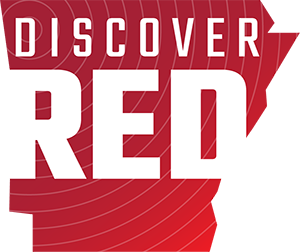Philosophy Professors Invent New Method for Teaching Critical-Thinking Skills

Most critical-thinking classes and textbooks focus on one method of teaching this important skill: through the use of logic, and, by extension, identifying fallacious arguments. The problem is, this is not the way most people evaluate arguments and form their beliefs.
In their textbook, The New Critical Thinking: An Empirically Informed Introduction, philosophy professors Jack Lyons and Barry Ward put forward a groundbreaking new way to teach critical thinking.
Lyons, professor of philosophy in the Fulbright College of Arts and Sciences, says that “critical thinking is the most important thing we teach in college,” yet most critical-thinking classes are taught by philosophers, who are “very enamored of [teaching] fallacies and logic.”
Ward, an associate professor of philosophy, adds, “The standard way of teaching is, ‘here’s a bunch of good arguments; here’s a bunch of fallacies.’ But there are lots of ways we form beliefs, which are not all logical or fallacious. The lists are useless.”
In fact, as the introduction of their textbook states, psychologists have demonstrated that many of our mistakes are not caused by formal reasoning gone awry, but because we don’t even use formal reasoning in the first place, instead using unreliable, intuitive thinking methods.
“That was one of the guiding motivations for writing this textbook,” Lyons says. “The other [textbooks] completely ignore psychology.”
The two seek to teach critical thinking from a psychologically informed perspective, where students are taught to spot and identify errors in their thinking, as well as to see and work around their intellectual “blind spots.”
They incorporate insights from epistemology and the philosophy of science to learn how to evaluate premises. In addition, they introduce new tools like frequency trees for understanding and evaluating complex probabilities problems, and argument maps for evaluating arguments.
One critical, and often overlooked, issue their textbook addresses is the problem with getting information from the internet and social media.
A related, but no less vital, skill they teach is how to identify fake news. The book was written before the 2016 election, so “the term ‘fake news’ didn’t have the connotations it has now,” Lyons says. “We use the real definition of the term: actual fabrication.”
A big part of learning how to identify fake news is learning how to evaluate expert testimony, and their textbook goes into great detail on how to assess those experts.
“Most of what you and I believe, we believe from expert testimony – that the earth is round, for example,” Ward says. “We’re focusing on that – when should you believe something, based on someone’s testimony?”
As a result of the spread of fake news and the public’s inability to recognize it, Lyons says, “People are dismissing whole swaths of knowledge based on fallacious thinking. This has serious consequences.”
“We’ve got to address this,” Lyons says. “It’s more important now than ever.”



